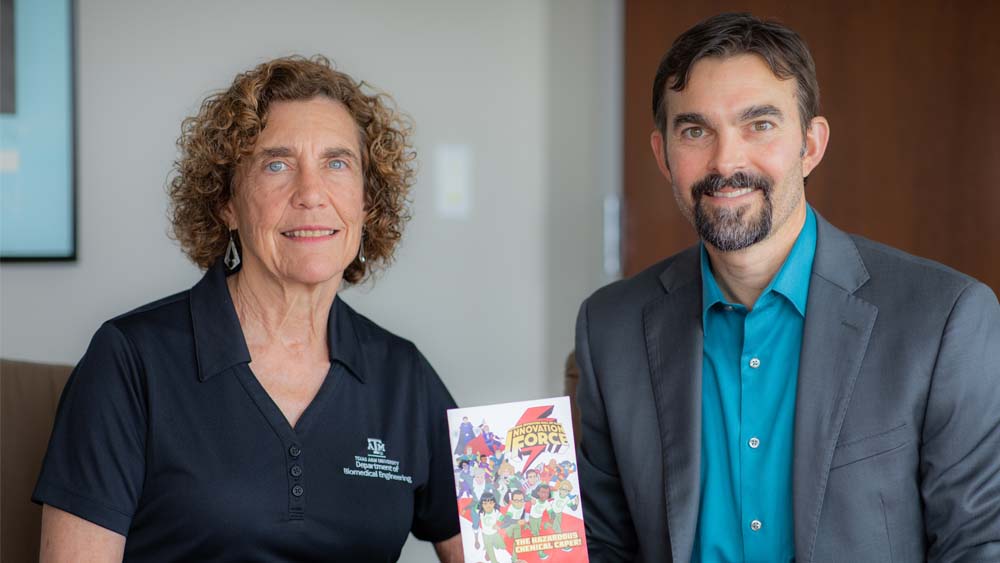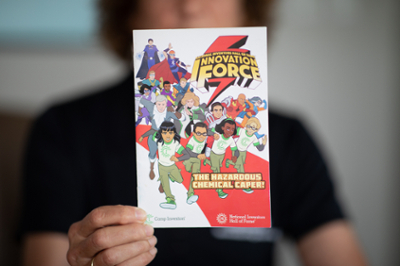
Thomas Edison, Henry Ford, Frances Ligler. All three are internationally recognized inventors. Two are long gone, but the other is now on the biomedical engineering faculty at Texas A&M University. The Department of Biomedical Engineering and the entire university community welcomed Dr. Frances Ligler as a chaired professor starting spring 2022.
Ligler will help faculty strengthen research programs, facilitate new research partnerships and mentor aspiring leaders within biomedical engineering.
“I am looking forward to working with talented faculty and students in biomedical engineering and to building collaborations across the university,” Ligler said.
Pioneer in the field
Ligler’s background is a fantastic fit for the department’s current research efforts. She has published research on biosensors, microfluidics, tissue-on-chip systems and regenerative medicine. She has also performed research in biochemistry, immunology and analytical chemistry. Most recognizably, she is a leader in the optical biosensor industry.
Ligler was the first to invent and develop a usable tactical biowarfare defense system for the United States. At the U.S. Naval Research Laboratory, her work was instrumental in producing tactical sensors for detecting botulinum toxin and anthrax during Operation Desert Storm.
“I like doing things with my hands and finding out about life in a hands-on way,” she said. “I got interested in biosensors from the molecular side. A biosensor is a piece of hardware that incorporates a biological molecule to do detection, so the biological molecule can be an antibody or a piece of DNA or anything that can bind to a target that you’re interested in.”

In recognition of her invention of portable optical biosensors, Ligler was inducted into the National Inventors Hall of Fame (NIHF) in 2017. Out of over 11 million inventors who are named on U.S. patents, only 608 of them have received this distinction. Ligler is one of only 20 living women to be honored and the only current member of the Texas A&M faculty to be an inductee. The biosensors she pioneered were developed for protection against exposure to hazardous agents, providing rapid response in identifying and quantifying pathogens, toxins, pollutants, drugs of abuse or explosives. She has 37 issued U.S. patents and 11 commercially produced biosensor products, which have been critical pieces of security and health safety systems.
Ligler is an elected member and former councilor (governing board member) of the National Academy of Engineering (NAE), the most prestigious body in the United States, recognizing the societal impact of engineering work. She is also a fellow in the International Society for Optics and Photonics, the American Institute for Medical and Biological Engineering, the American Association of Arts and Sciences and the National Academy of Inventors.
Ligler’s many other recognitions, including two honorary doctorates, are significant in quantity and quality, including domestic and international awards. Of particular note are some rare honors:
- Presidential Rank of Distinguished Senior Professional awarded by President George W. Bush and Presidential Rank of Meritorious Senior Professional awarded by President Barack Obama,
- Christopher Columbus Foundation’s Homeland Security Award (Biological, Radiological, Nuclear Field),
- NAE’s Simon Ramo Founders Award
Dedication to service
Service is a priority in Ligler’s life, from encouraging other engineers to supporting the engineering and health care professions on a national and international scale. Since being elected to the NAE in 2005, Ligler has served on several academy committees to advise the nation, working on projects related to topics such as how to keep the United States competitive in science and technology; science, engineering and medicine public policy; and combating misinformation on the internet.
Service in student training and mentorship has been an extensive part of her professional life. Ligler has mentored more than 200 undergraduates for research experiences, and more than 150 undergraduates are included as co-authors on her papers.
“The most important part of what I want to leave behind is people who are open to new ideas, to continue learning throughout their entire lives and understanding what other science and engineering disciplines and people with different backgrounds, knowledge and understanding can contribute to a project that benefits society,” she said.